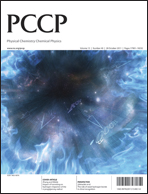Electrochemical performances of LiMnPO4 synthesized from non-stoichiometric Li/Mn ratio†
Abstract
In this paper, the influences of the lithium content in the starting materials on the final performances of as-prepared LixMnPO4 (x hereafter represents the starting Li content in the synthesis step which does not necessarily mean that LixMnPO4 is a single phase solid solution in this work.) are systematically investigated. It has been revealed that Mn2P2O7 is the main impurity when Li < 1.0 while Li3PO4 begins to form once x > 1.0. The interactions between Mn2P2O7 or Li3PO4 impurities and LiMnPO4 are studied in terms of the structural, electrochemical, and magnetic properties. At a slow rate of C/50, the reversible capacity of both Li0.5MnPO4 and Li0.8MnPO4 increases with cycling. This indicates a gradual activation of more sites to accommodate a reversible diffusion of Li+ ions that may be related to the interaction between Mn2P2O7 and LiMnPO4


 Please wait while we load your content...
Please wait while we load your content...